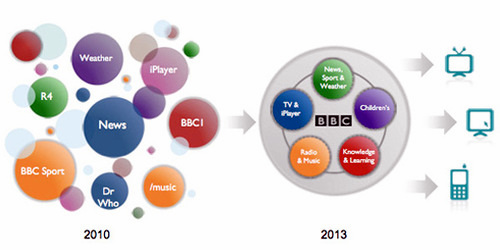Publishing in a Device Rich Age
The channels we publish to in the future will only proliferate, and we need to start preparing for that now.


I had cause to visit the brand new Apple Store in Covent Garden this morning; my AppleTV had developed the blinking amber light of death, and a visit to the Genius Bar was in order.
20 minutes later, it had been swapped out for a new one, and I was off to the Procter Street office. And I was happy. I love my AppleTV. I love being able to watch home movies easily on my HD TV, to be able to buy the video content I want, download it and watch it, and enjoy video podcasts from the comfort of my sofa. However, I know that such download/streaming services haven’t hit the mainstream, yet.
However, the feeds I’d been catching up with on my iPad were full of the news that a brand new version of the AppleTV, to be called the iTV, may well be on its way, based on the iPhone OS (or iOS, as we should be calling it now), with apps and all. And that, in turn, reminded me of the Google TV effort on its way. Connected TV is here, and every effort is being made to push it mainstream. And what are the consequences of that?
Publishing, as a business, has been pretty slow to adapt to the mobile internet age. We’ve built entire corporate infrastructures based on two-channel publishing: print and the web. But devices that can access the internet are proliferating rapidly, and I suspect we’re moving towards a genuinely multi-channel age. And are we anywhere near ready to cope with some of our content being on internet-enables TVs?
Clearly the BBC is thinking about this, but then it has something of a head-start in the TV area. But it is, itself, a content company, that’s trying to adapt to a multi-platform strategy, just like the rest of us. And here’s the idea they’re pushing towards:

You can find the whole thinking behind what they’re planning on the About The BBC blog.
Now, clearly some of these moves are being driven by the BBC’s strategy review and the need to drive down costs. But I cna’t help find the clarity of what they’re doing appealing – start to reorganise around content types rather than output types (TV and radio are still in the chart, but you can think of them as video and audio entertainment content, and the pattern becomes clear).
As the devices that people use to access content start to diversify, this seems like the only sane approach, otherwise the days of the web team fighting with the print team over a story will seem like a happy, bygone era, as multiple channel teams each fight over a story…





